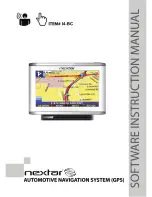
CAP 413
Radiotelephony Manual
Chapter 2 Page 20
f) In the case of a receiver failure transmit reports twice at the scheduled times or
positions on the designated frequency preceded by the phrase 'TRANSMITTING
BLIND DUE TO RECEIVER FAILURE'.
g) An aircraft which is being provided with air traffic control service, advisory service
or aerodrome flight information service is to transmit information regarding the
intention of the pilot in command with respect to the continuation of the flight.
Specific procedures for the action to be taken by pilots of IFR and Special VFR
flights are contained in the appropriate AIP ENR and/or AD sections.
1.18.2
Ground – Air
1.18.2.1 After completing checks of ground equipment (most airports have standby and
emergency communications equipment) the ground station will request other
aeronautical stations and aircraft to attempt to communicate with the aircraft which
has failed to maintain contact.
1.18.2.2 If still unable to establish communication the aeronautical station will transmit
messages addressed to the aircraft by blind transmission on the frequency on which
the aircraft is believed to be listening.
1.18.2.3 These will consist of:
a) The level, route and EAT (or ETA) to which it is assumed the aircraft is adhering.
b) The weather conditions at the destination aerodrome and suitable alternate and, if
practicable, the weather conditions in an area or areas suitable for descent through
cloud procedure to be effected. (See AIP ENR Section.)
1.19
Test Transmissions
1.19.1
All radio transmissions for test purposes shall be of the minimum duration necessary
for the test and shall not continue for more than 10 seconds. The recurrence of such
transmissions shall be kept to the minimum necessary for the test.
1.19.2
The nature of the test shall be such that it is identifiable as a test transmission and
cannot be confused with other communications. To achieve this the following format
shall be used:
• the callsign of the aeronautical station being called;
• 'the aircraft identification';
• the words 'RADIO CHECK';
• 'the frequency' being used;
1.19.3
The operator of the aeronautical radio station being called will assess the transmission
and will advise the aircraft making the test transmission in terms of the readability
scale (Table 11), together with a comment on the nature of any abnormality noted (i.e.
excessive noise) using the following format:
• 'the aircraft identification';
• 'the callsign' of the aeronautical station replying;
• 'READABILITY x' (where 'x' is a number taken from Table 11);
• 'additional information' with respect to any noted abnormality;
NOTE:
For practical reasons it may be necessary for the operator of an aeronautical
station to reply with 'STATION CALLING
(frequency or 8.33 channel)
UNREADABLE'.
31 March 2011
Summary of Contents for 413
Page 1: ...CAP 413 Radiotelephony Manual Edition 20 www caa co uk Safety Regulation Group ...
Page 2: ......
Page 3: ...CAP 413 Radiotelephony Manual Edition 20 Safety Regulation Group 17 November 2011 ...
Page 6: ...CAP 413 Radiotelephony Manual Amendment Number Amendment Date Incorporated by Incorporated on ...
Page 10: ...INTENTIONALLY LEFT BLANK ...
Page 18: ...INTENTIONALLY LEFT BLANK ...
Page 20: ...INTENTIONALLY LEFT BLANK ...
Page 68: ...INTENTIONALLY LEFT BLANK ...
Page 126: ...INTENTIONALLY LEFT BLANK ...
Page 162: ...INTENTIONALLY LEFT BLANK ...
Page 170: ...INTENTIONALLY LEFT BLANK ...
Page 178: ...INTENTIONALLY LEFT BLANK ...
Page 206: ...INTENTIONALLY LEFT BLANK ...
Page 248: ...INTENTIONALLY LEFT BLANK ...
Page 254: ...INTENTIONALLY LEFT BLANK ...
Page 264: ...INTENTIONALLY LEFT BLANK ...
















































